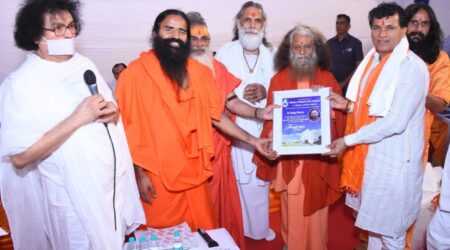By Bhaswati Bhattacharya
It is often said that the biggest problem in healthcare is not the science, but the commerce of it. Commerce is more than the activity of buying and selling; it is the control of social dealings between people. What social contracts do we assume in society? Should healthcare be free? Who will pay for the time and energy of giving care? Should caregivers be volunteers? Who will pay for the medicines that take time and energy, as well as substances, preparation, and dispensing? How do we evaluate life and who should get how much care?
The ancient texts of Ayurveda advise to first serve the commerce decisions and needs of the bhupair, or ruler of the land. This ruler of the land — today called king — was not the one who ruled by brute force, but rather the one who had learned the ways of the land, its waters, its weather, the crafts of the people, the cultures, and the languages. The one with the allegiance to peacefully maintain and serve the land and keep the people healthy became the master of the land, appointed bhupair. Social dealings that sustained the resources and the health of the people were prioritized. Giving people a good life, filled with health and the ability to learn, work and live happily was the priority.
For thousands of years, Indian and Native American societies maintained this code of conduct. The invaders who arrived often preferred becoming peaceful kings and remained as members. But then a new trend developed. Conquerors came to abuse power, to undo the peace on one land and take from it in order to establish their own dominion. The attitude filtered to the local levels of power, prioritizing control and greed rather than harmony and sharing. This colonial mentality has persisted for 2000 years, tearing at the fabric of a peaceful society.
For example, in Bengal which is known for its rich heritage of ayurvedic parampara (traditional lineages of learning), the healthcare system has been challenged for 200 years by the systematic deprivation of knowledge to the people. While the land is naturally filled with medicinal plants, the best way to get people dependent on commercial avenues of health-seeking behavior is to deprive them of the knowledge of resources freely around them. Since the time Sanskrit was forbidden and Ayurveda was outlawed in favor of English medicine, the health providers struggled to preserve intelligent ancient traditions.
Today, doctors of Ayush – Ayurveda, Yoga, Unani, Siddha, and Homeopathy – in Bengal struggle to get their patients to use medicinal plants for diseases once they are diagnosed by modern medicine. Patients are reluctant to state their preferences and they are taught by the media that real medicine is pharmaceutical medicine, due to conventional medicine rules and due to the bias of journalists.
Several realities stand as obstacles due to the hegemony of medical institutions and the mainstream media, which are largely owned by the pharmaceutical block. Ayush doctors hired by the Indian government as medical officers for the public are assigned to work in state-funded health centers. As only the wealthy can afford private hospitals, by default most state health centers are visited by the poor, often non-literate and often gullible. Ayush doctors see patients, but after the basic medical information intake and some lifestyle counseling, the conventional doctors come and take over, giving the modern medical prescription. Natural medicines that help to solve the anti-microbial resistance (AMR) crisis are thrown out in favor of the same antibiotics that are over-prescribed and abusing the ecosystem.
Frustrated that they cannot practice their own medical system and write prescriptions according to their training, Ayush officers are shunted into the roles of junior medical students. They do not get the confidence of using their own medical competence, even if the clinic pharmacy has the medicines. They cannot prescribe them due to the bullying of conventional doctors.
Forced to work as junior medical students, doing all the work than handing the chart over to an allopathic doctor for the final signature and therapeutic prescription has cost Ayush doctors their self-esteem. It furthers a system in which Ayurveda is suppressed.
But ultimately, the patient suffers. Just as many times women who want natural deliveries when they are in labor are forced into C-sections. So patients, who want lesser side-effects and nature-based herbal formulations, are forced to take conventional medical prescriptions. Patients do have a right to state the care they want, but they must be articulate, intelligent, and informed. Most are not.
The solution for promoting medicines effective for patients is a reform by the masses, demanding greater education on other medical systems and demanding all medicinal options, not only mainstream medical options. Only when the patients demand freedom and education to rightfully choose their own system of health will Ayurveda truly thrive.












